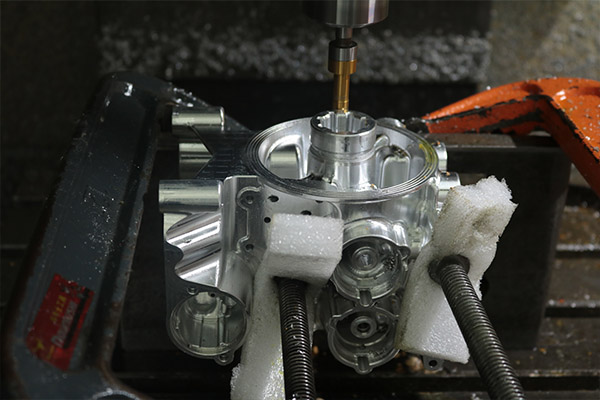Get in touch.
Dear,I will reply in 12 hours. All your message are protected!
Rapid Prototyping Services, Professional manufacturer of CNC Prototyping and 3D Prototyping in China.
CNC (Computer Numerical Control) machining is a highly efficient manufacturing process that relies on precise tool movements to create intricate and accurate parts. One critical aspect of achieving optimal results in CNC machining is the proper fixation or workholding of the workpiece. In this article, we will explore the various methods and best practices for securely and effectively fixing workpieces during CNC machining, ensuring stability and precision throughout the process.

1.Importance of Workholding in CNC Machining:
Workholding refers to the techniques and devices used to secure the workpiece in place during CNC machining. Proper workholding is essential for several reasons, including maintaining dimensional accuracy, reducing vibrations, preventing tool chatter, and ensuring a consistent surface finish. By using appropriate workholding methods, you can maximize the efficiency and quality of CNC machining.
2.Vise and Fixture Systems:
One common method of workholding is using vise and fixture systems. Vises are versatile devices that grip the workpiece firmly, allowing for easy positioning and secure clamping. Fixtures, on the other hand, are custom-designed setups that hold the workpiece in a specific orientation, enabling precise machining of complex geometries. Utilizing a combination of vises and fixtures provides flexibility and stability during CNC machining.
3.Clamping Techniques:
Effective clamping is crucial for workpiece stability. Consider using clamps, bolts, or screws to secure the workpiece firmly to the vise or fixture. Ensure that the clamping force is evenly distributed to avoid distortion or uneven machining. Additionally, use soft jaws or protective materials to prevent damage to the workpiece surface while providing a secure grip.
4.Zeroing and Alignment:
Accurate zeroing and alignment of the workpiece are vital for precise machining. Use edge finders, probe systems, or dial indicators to locate and establish the reference points on the workpiece. Align the workpiece parallel or perpendicular to the machine's axes, ensuring that the tool movements correspond accurately to the desired dimensions. Regularly verify and adjust the alignment throughout the machining process to maintain precision.
5.Vacuum Tables:
Vacuum tables are effective workholding solutions for thin or flat workpieces. These tables use suction to hold the workpiece securely in place, allowing for full access to the top surface during machining. Vacuum tables are particularly useful for parts that cannot be clamped easily or where surface contact is critical.
6.Custom Fixturing:
For complex or irregularly shaped workpieces, custom fixturing may be necessary. This involves designing and fabricating specialized fixtures that securely hold the workpiece while providing access to the machining areas. Custom fixturing ensures optimal stability, precision, and repeatability for intricate or unique parts.
7.Modular Workholding Systems:
Modular workholding systems offer flexibility and efficiency in CNC machining. These systems consist of standardized components that can be quickly assembled and adjusted to accommodate different workpieces. By utilizing modular workholding systems, you can reduce setup times and maximize productivity while maintaining stability and precision.
8.Regular Inspection and Maintenance:
To ensure continued workholding effectiveness, it is essential to regularly inspect and maintain the workholding devices. Check for wear, damage, or signs of fatigue in clamping components, vise jaws, or fixture elements. Clean and lubricate the workholding system regularly to prevent debris or contamination that can compromise stability and precision.
Conclusion:
Proper workholding is vital for achieving stability and precision in CNC machining. By utilizing vise and fixture systems, employing effective clamping techniques, ensuring accurate zeroing and alignment, and considering options such as vacuum tables, custom fixturing, or modular workholding systems, you can optimize the workpiece fixation process. Regular inspection and maintenance of the workholding devices will help ensure long-term stability and precision in your CNC machining operations.
© 2005-2025 Shenzhen Tuowei Model Technologies Co., Ltd. | All Rights Reserved 粤ICP备11096697号